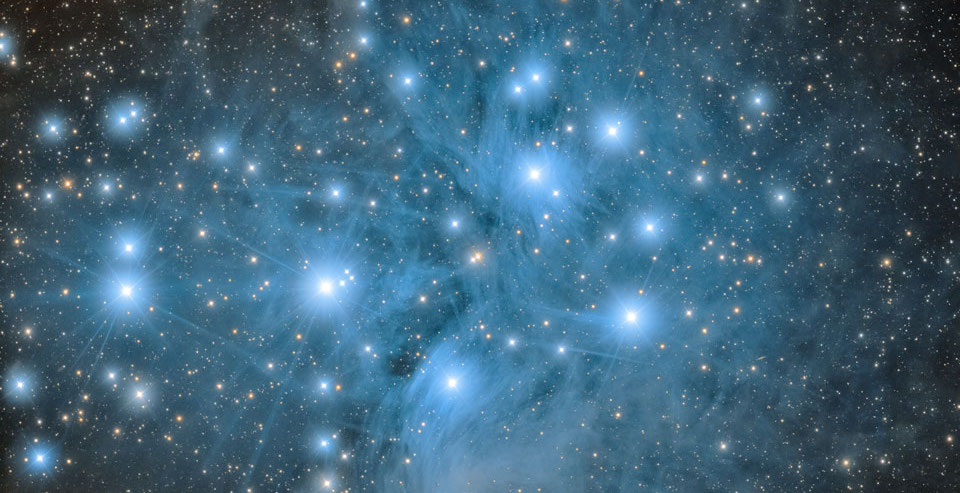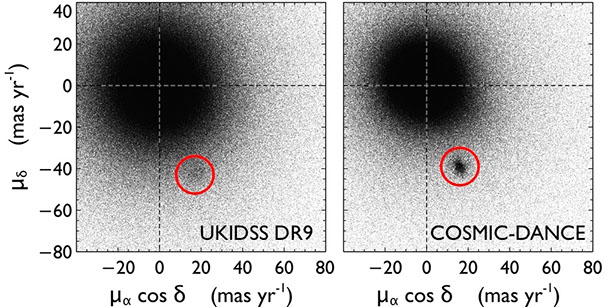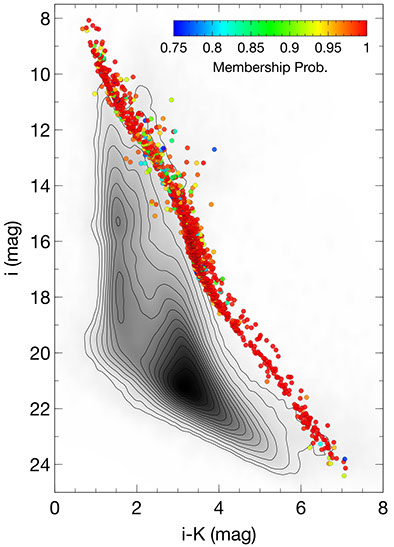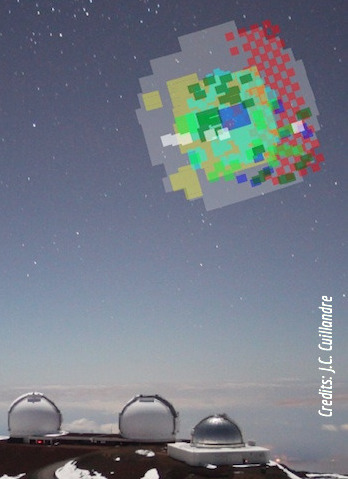
Mining the astronomical archives
We search the astronomical archives and retrieved wide field images obtained at various telescopes:
More than 16,500 images were retrieved and processed on our super-computer. The photograph on the left shows the footprint of the various datasets overplotted on the sky over Mauna Kea observatories (Keck I & II and UKIRT, from left to right). The area covered encompasses more than 80 square degrees.Measuring the stars motions
The figure below shows a so-called "vector-point diagram". It represents the proper motion in declination vs the proper motion in right ascension. A large clump randomly distributed around zero corresponds to the field stars. A smaller clump, located around (+20,-40) mas.yr-1, also appears, and corresponds to the Pleiades members. For comparison, the same diagram drawn using the UKIDSS DR9 proper motion measurements over the exact scame area are represented. The Pleiades clump is barely visible, making it hard to select members.

Finding the cluster members
 These proper motion measurements and the multi-wavelength photometry were fed to our proto-type selection software and the membership probability of every single source in the data was computed.
The figure on the left shows a (i, i-K) color-magnitude diagram with the final sequence of the Pleiades members found in our study overplotted. The color scale represents the membership probability. We reach well beyond Gaia's limit of sensitivity, down to ~25MJup. The sequence is extremely clean, and one can see the binary sequence just 0.75mag above the single-star sequence.
These proper motion measurements and the multi-wavelength photometry were fed to our proto-type selection software and the membership probability of every single source in the data was computed.
The figure on the left shows a (i, i-K) color-magnitude diagram with the final sequence of the Pleiades members found in our study overplotted. The color scale represents the membership probability. We reach well beyond Gaia's limit of sensitivity, down to ~25MJup. The sequence is extremely clean, and one can see the binary sequence just 0.75mag above the single-star sequence.
We applied our novel selection techniques to the old Tycho-2 and Hipparcos catalogues. We identified 207 candidates (in red) out of which 83 were new! Some historical candidates (in green in the figure) were also rejected.
The figure below allows you to compare the historical list of members (blue stars) with our new list (red stars) by moving the yellow slider. We almost doubled the number of members and multiplied by five the number of brown dwarfs!


